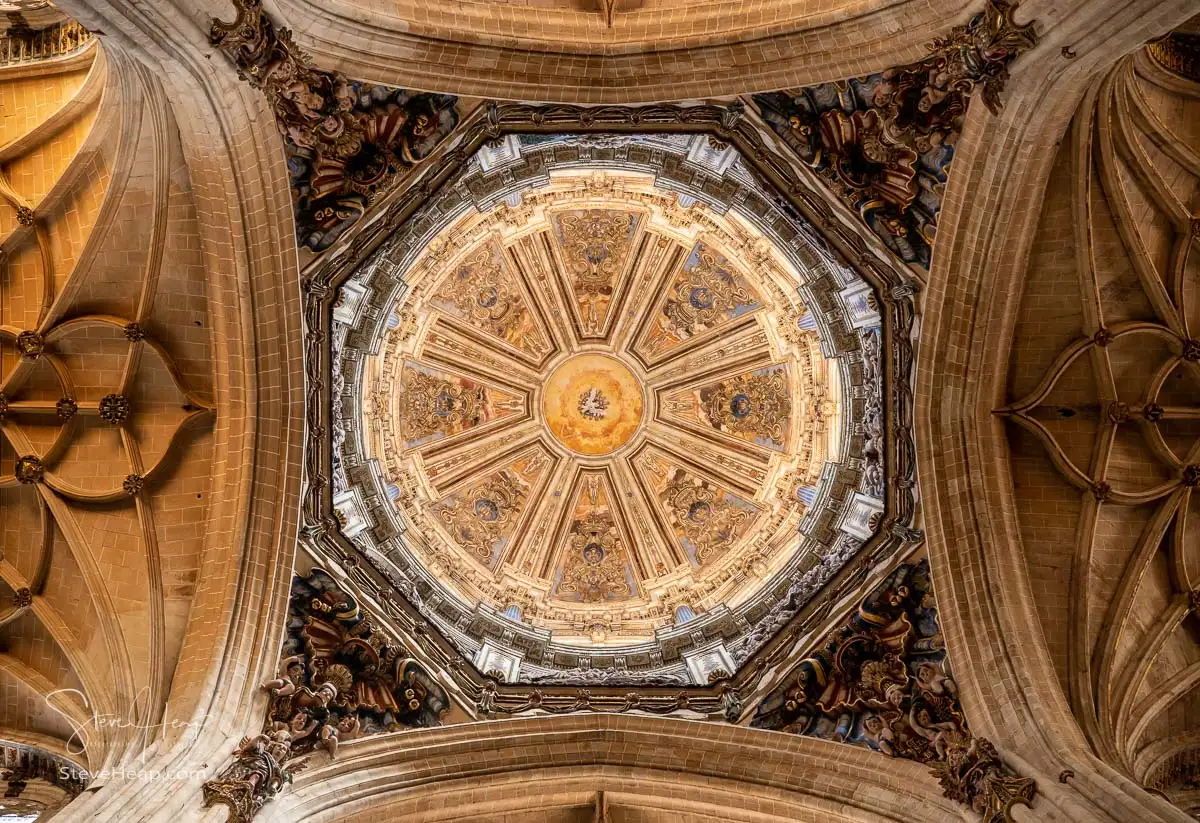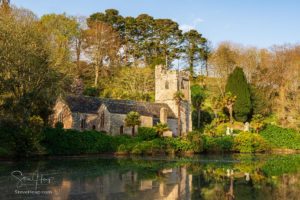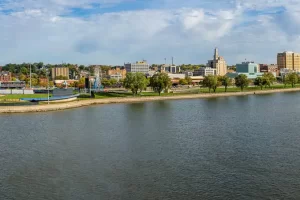The Douro River is not actually very long (in its navigable areas) and so our Viking River of Gold cruise reached Barca D’Alva in two days of sailing. Included in the cruise is a coach excursion into Spain to the ancient town of Salamanca. This article explores that trip as part of an extended review of the Viking cruise on the Hemming. The introductory article about the pre-cruise exploration of Lisbon can be found here.
We had sailed from Pinhao to Barca D’Alva the previous day, including a side tour to Castello de Rodrigo in the afternoon, and so we were ready the next morning for the drive to Salamanca. The journey takes around 2 hours or so, and we arrived in the late morning – certainly before the crowds start to gather in the main square of Salamanca known as Plaza Mayor:
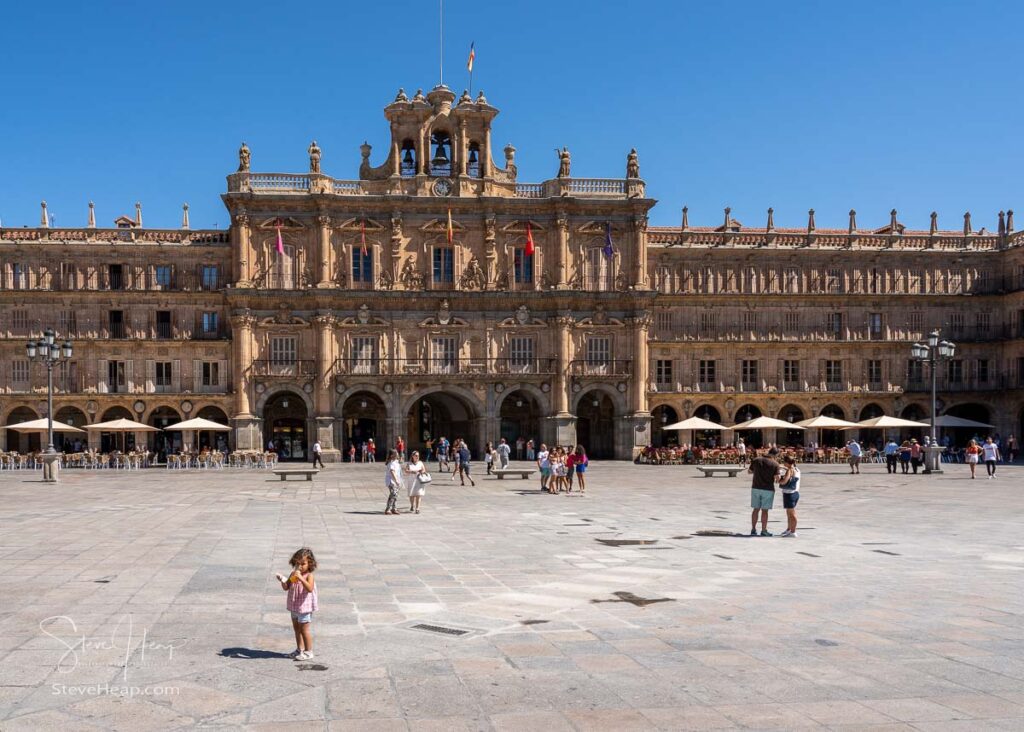
And certainly there was plenty of space to sit while our guide explained some of the history of the city
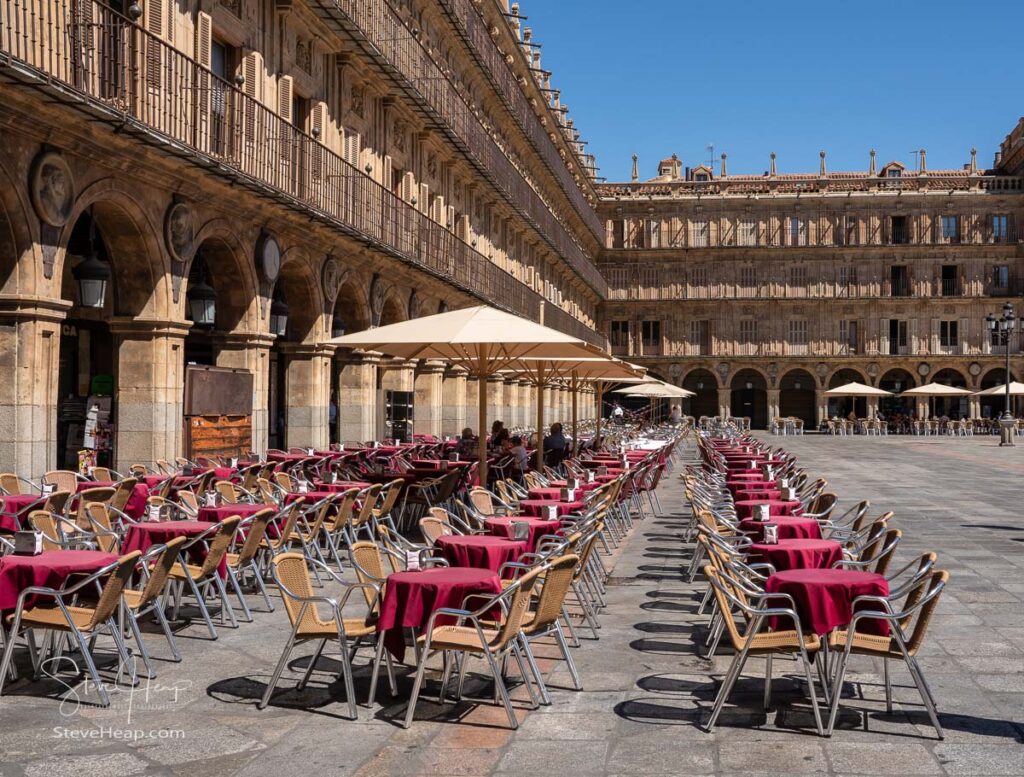
During the 16th century, the city reached its height of splendor (it is estimated that Salamanca had about 24,000 inhabitants and around 1580 6500 students were enrolled each year). During that period, the University of Salamanca hosted the most important intellectuals of the time.
In 1551, the Holy Roman Emperor Charles V, Holy Roman Emperor ordered an inquiry to find out if the science of Andreas Vesalius, physician and anatomist, was in line with Catholic doctrine. Vesalius came to Salamanca that same year to appear before the board and was acquitted. Sounds a little familiar to events in recent years!
The city had a revival in the 18th Century, so much so that this magnificent Plaza was built in 1729. The decorations in the stone work are highly detailed and I can imagine that the people who lived (and perhaps still do) had impressive apartments and homes:
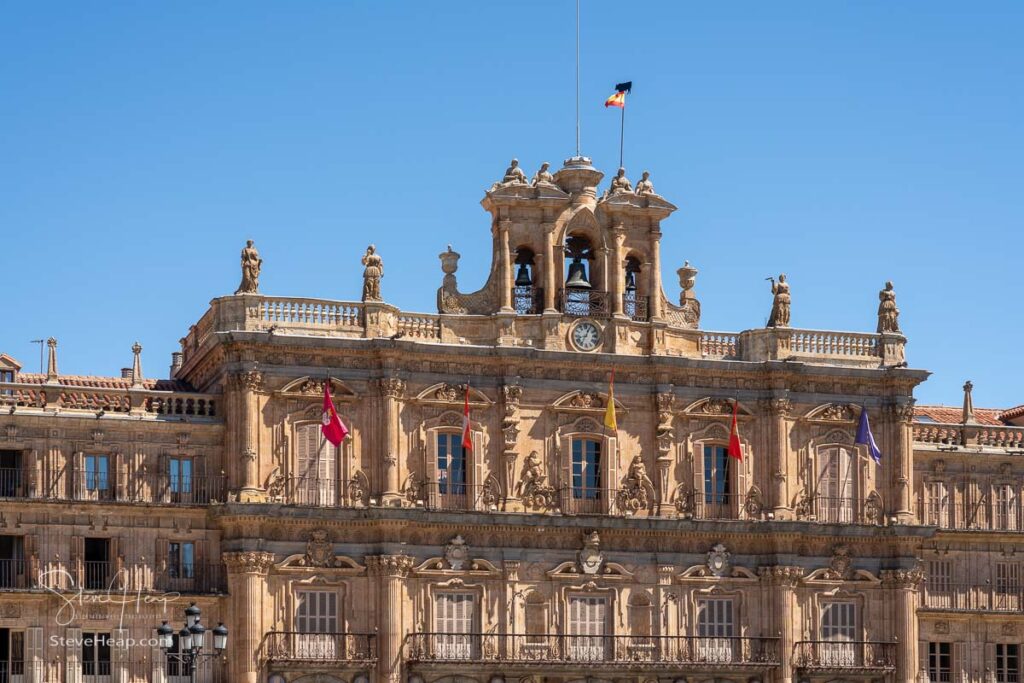
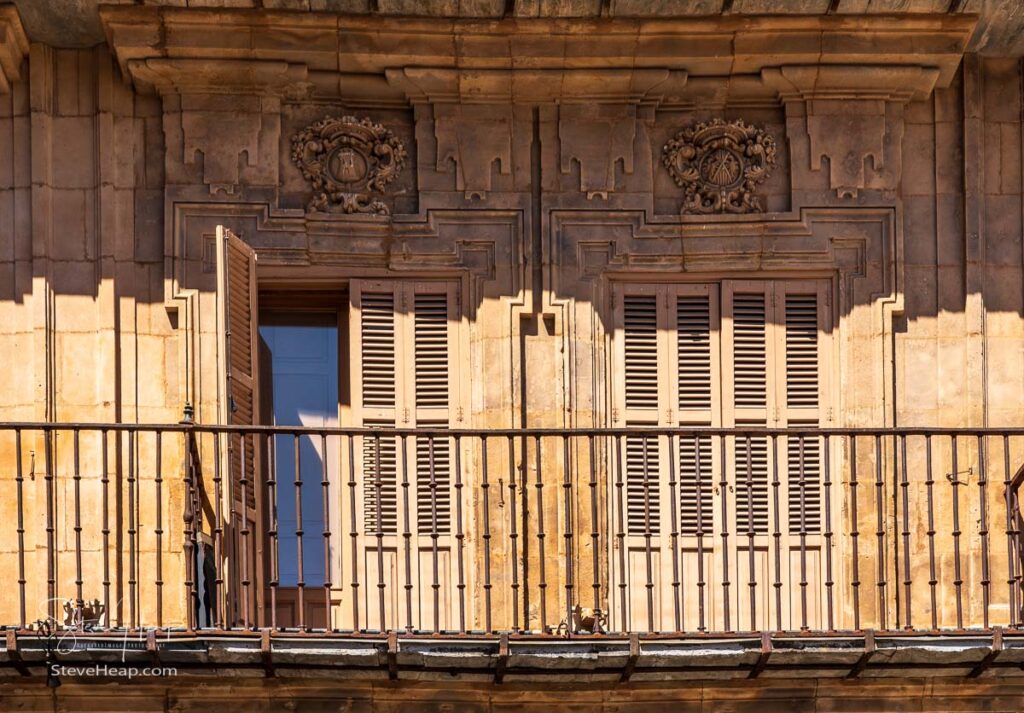
Our guided tour of the city took us to the main historic areas of this Unesco World Heritage site. It includes some of the best examples of Plateresque style architecture, which, if you are not familiar with the term (and I wasn’t), means “in the style of a silversmith” with ornate carvings of floral designs and fantastic creatures on the buildings.
Some of the buildings (although a little plainer) do their bit for the local wildlife. The Church of St Martin has a stork’s nest at the very top of the bell tower and it appears that an iron bowl has been set up there to help the nest stay in position!
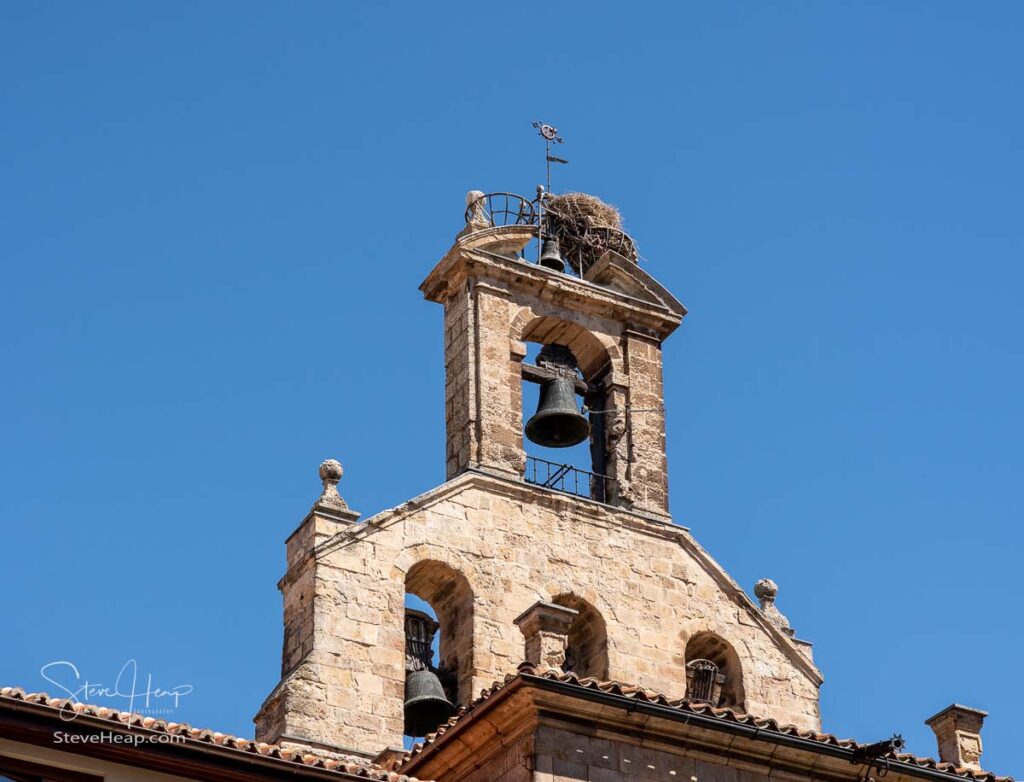
We visited the Shell house (nothing to do with the oil company) and toured its interior first:
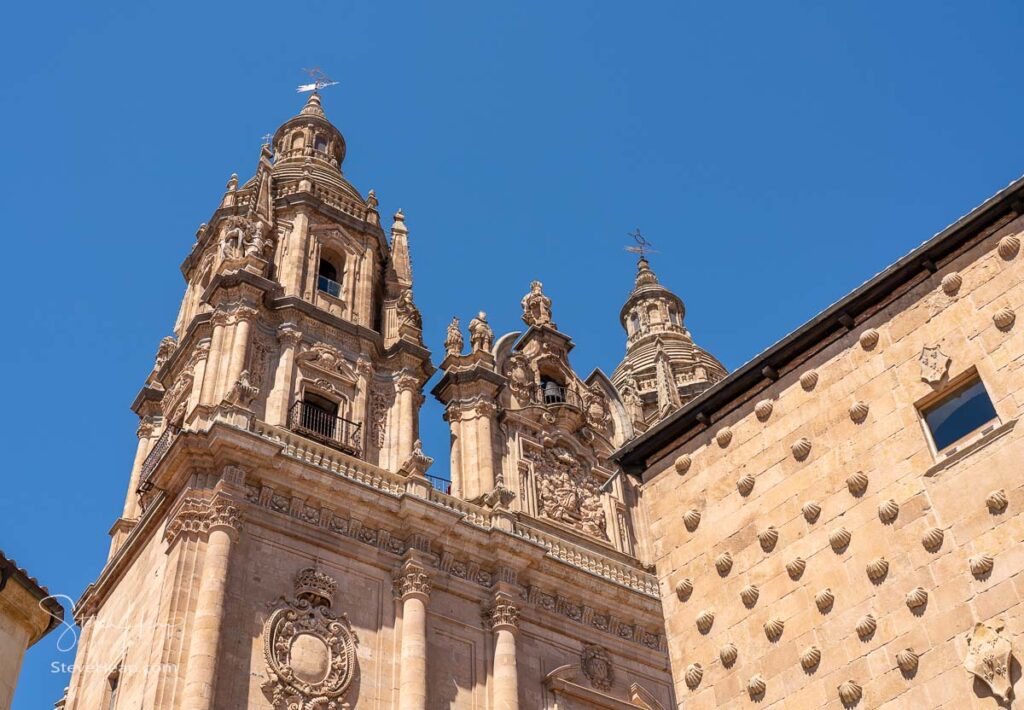
The shells are the symbol of the order of Santiago and also of the pilgrims on the Way of St James and now houses the public library in Salamanca. The wooden carved ceiling above the stairway inside shows just how complex these buildings are and also how the great Lisbon earthquake of 1755 shook and damaged many of these buildings.
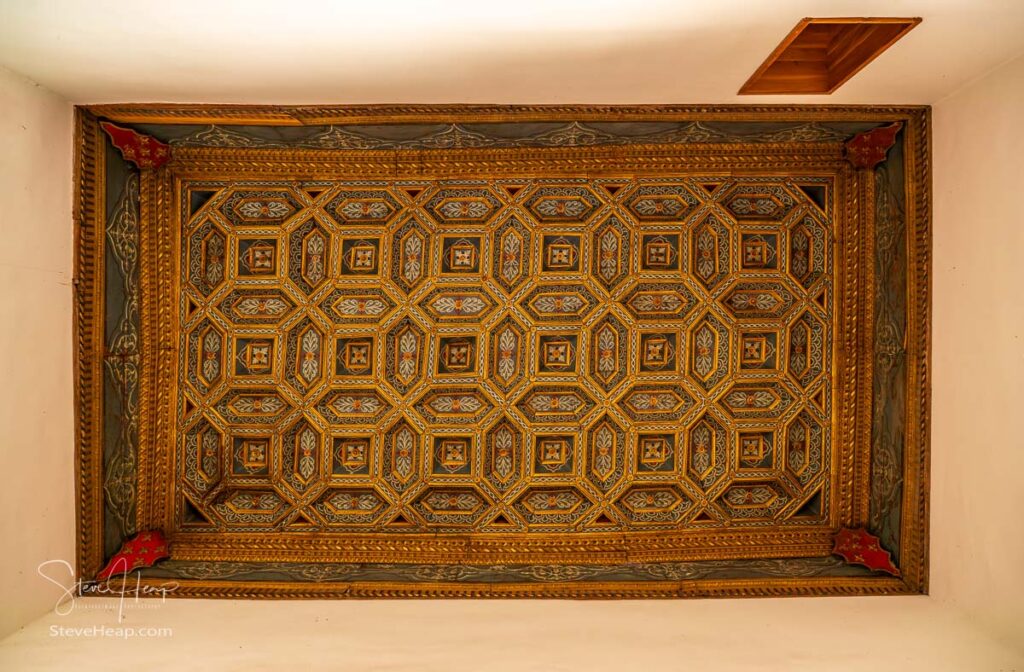
As you can see, somewhat out of shape, but still standing!
The university was originally established in 1254 by Royal Decree of Alfonso XI. This is one of the older university buildings by the Old Cathedral in the heart of the city:
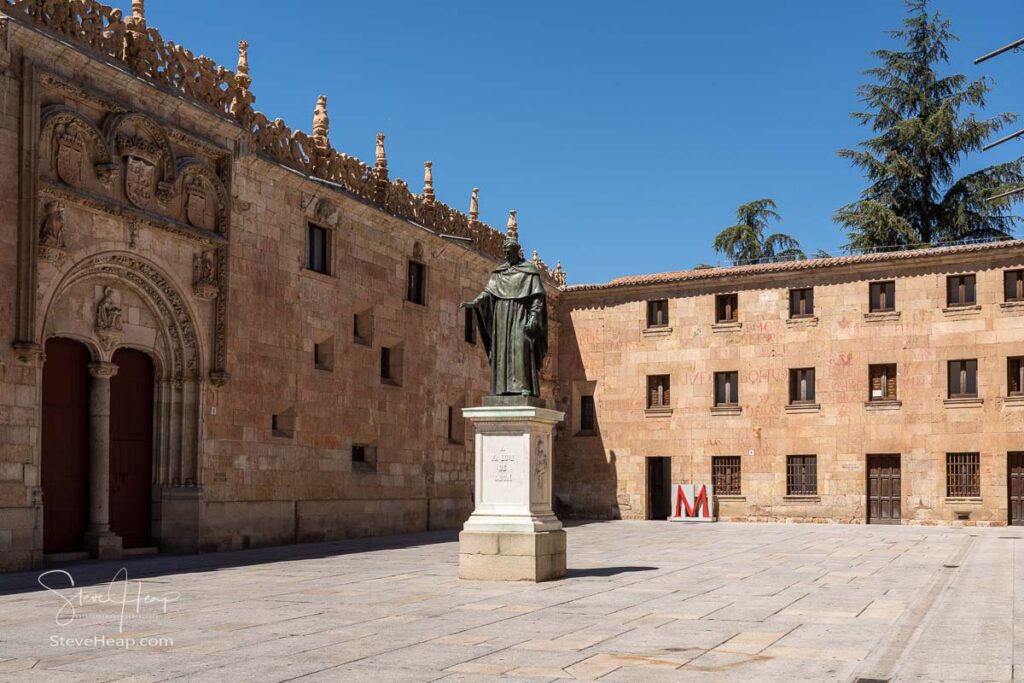
And looking back the other way, you see the main entrance to the University that shows off the Plateresque style to its best. These were built between 1401 and 1611 :
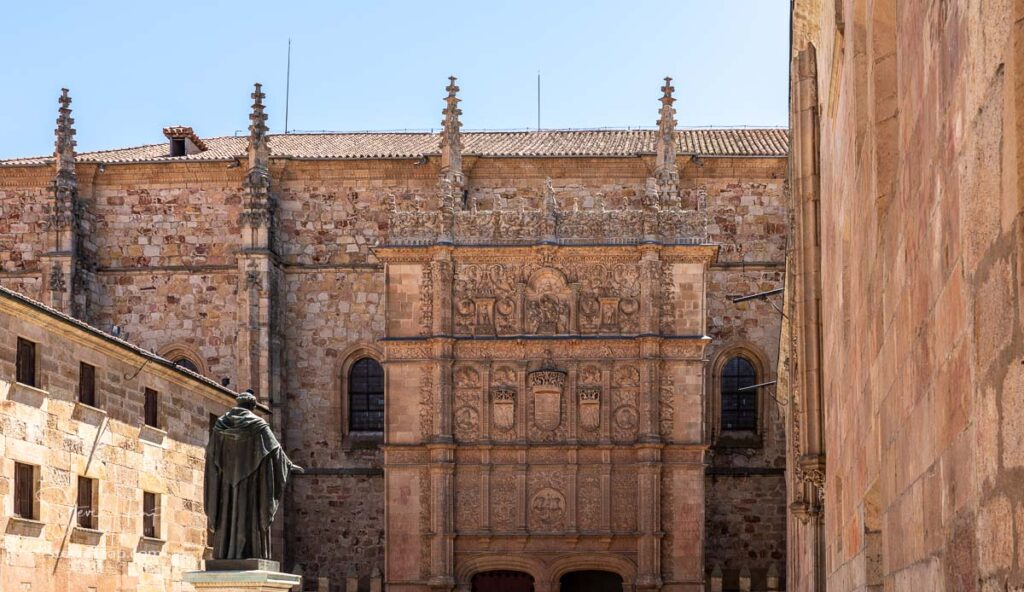
Salamanca has not one, but two cathedrals. The Old Cathedral was started in the 12th Century and finished in the 14th Century. In the early Modern age of 1520, it was decided that a New Cathedral was required, and the old one could then be demolished, but the new one took over 200 years to complete and by this time they had decided that they needed the space of both. So we currently have two very large churches side by side in the city. As you can imagine, the detail on the front facade of the Old Cathedral is magnificent with carvings from Bible stories decorating the area above and around the main doors.
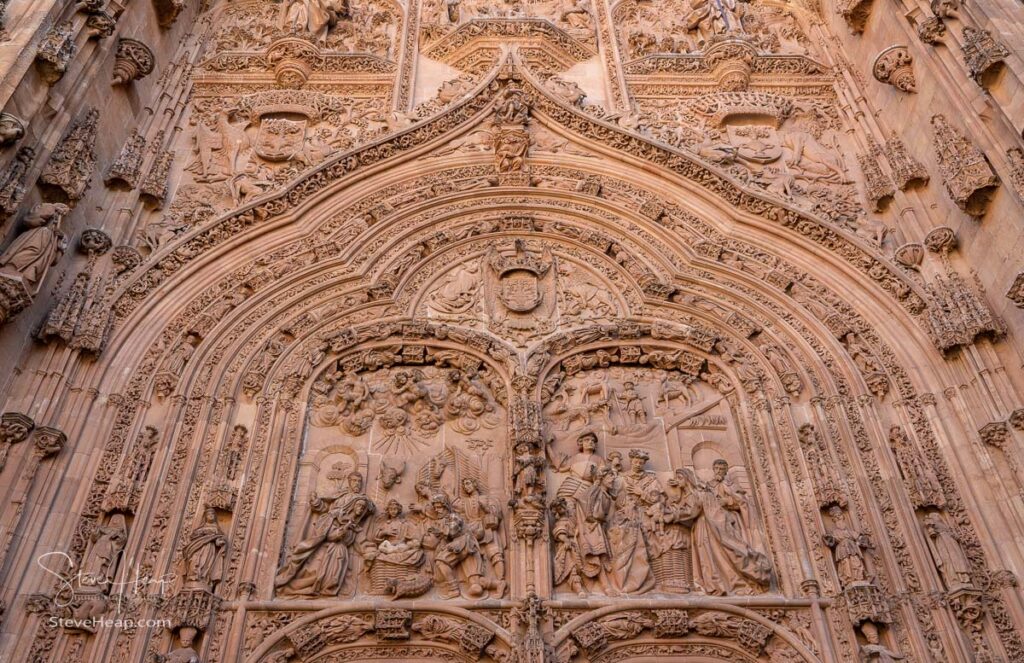
The guide had left us to explore on our own into these churches (as they don’t want organized groups with people speaking) and then we had time to just explore these buildings and the city on our own. We visited the New Cathedral first, and work is going on to this day on some of the exterior decoration. It’s fun to check out some of the carvings on the exterior – a spaceman, perhaps?
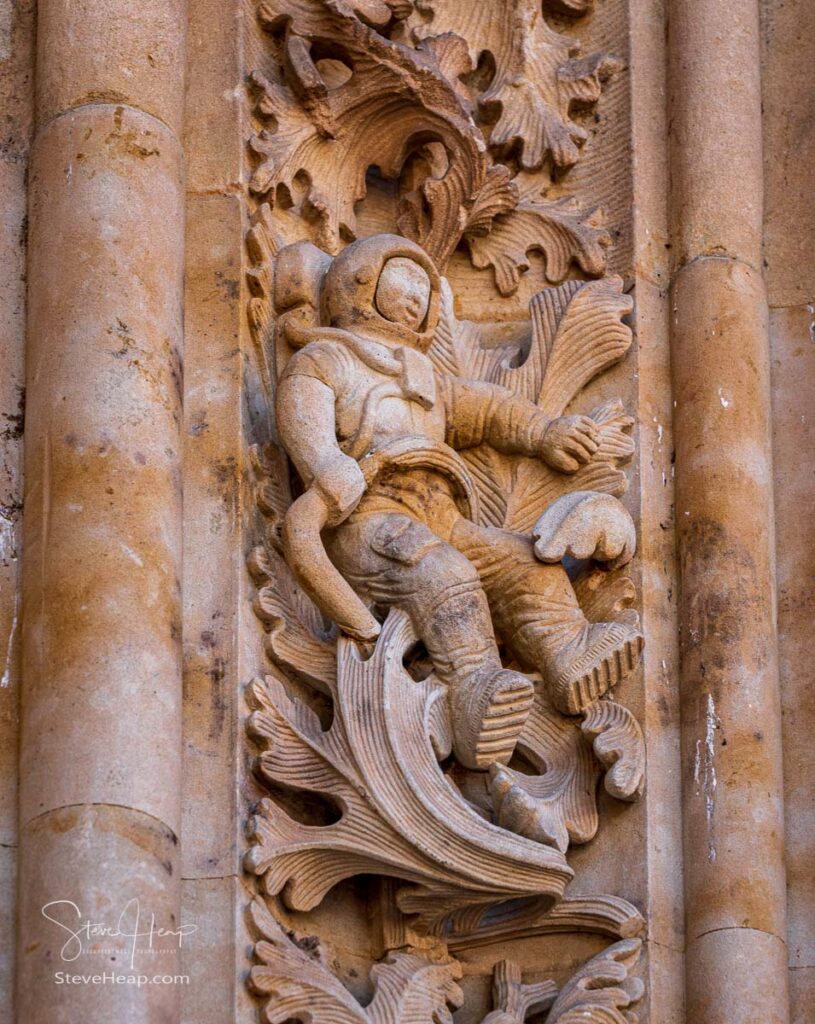
Or a lion holding an ice-cream cone?
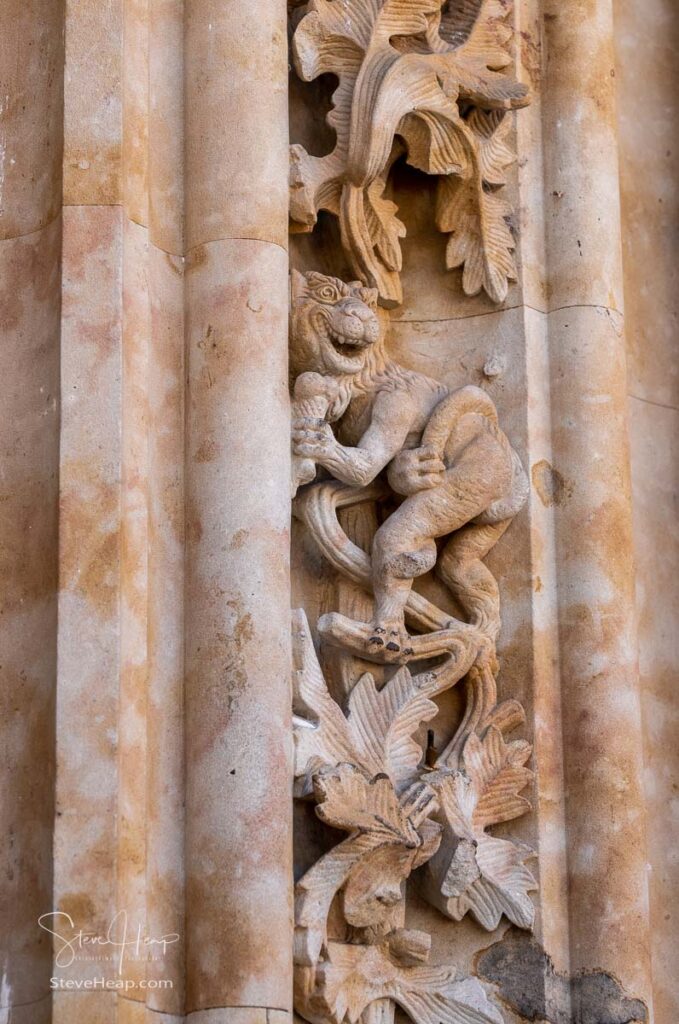
The interior, though, is a magnificent example of what craftsmanship can be all about. This ceiling design in the dome of the building has to be seen to be believed:
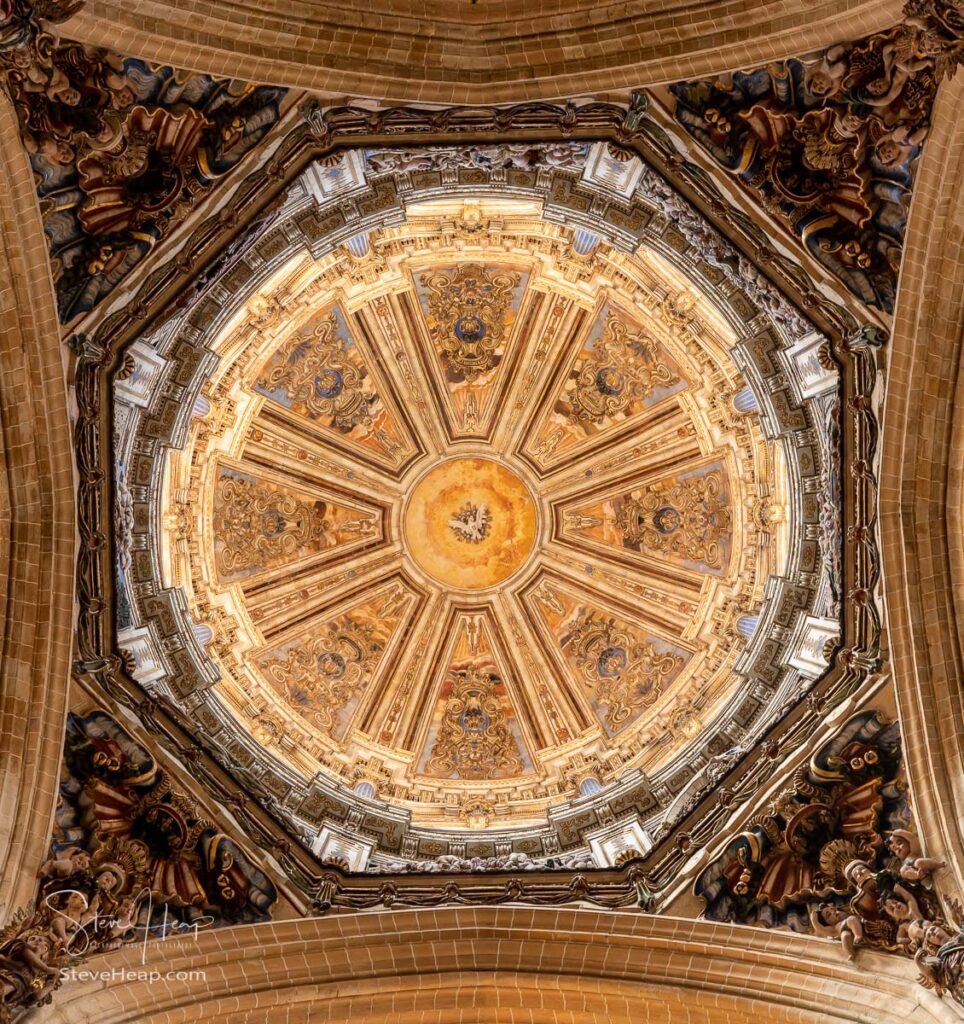
The Old Cathedral has its own magnificence, with the dome standing proud above the city:
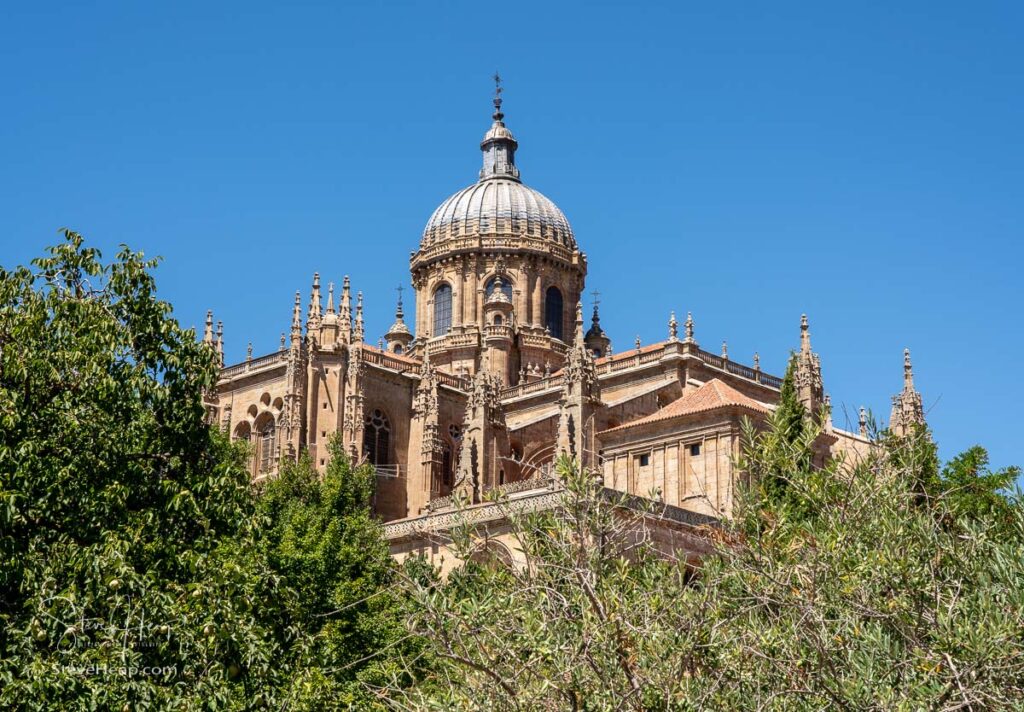
The side entrance is ornate enough for anyone:
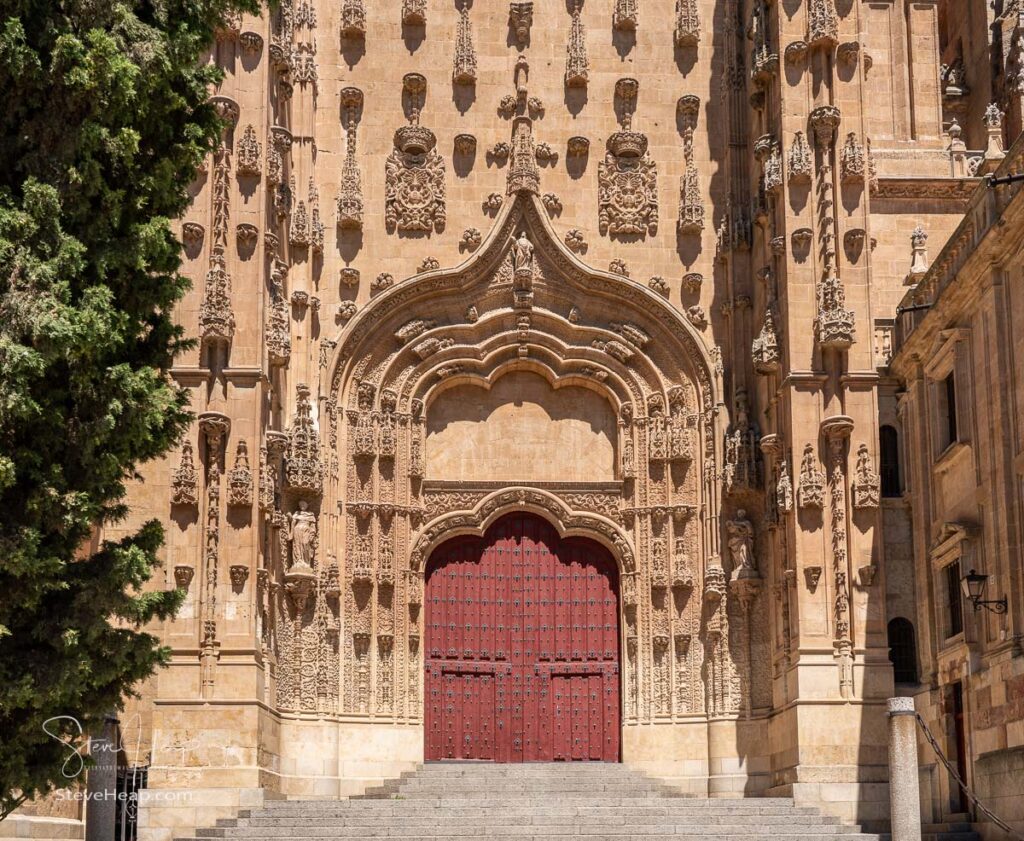
Once you are inside the magnificence continues. The woodwork carving in this tower must have taken years to complete!
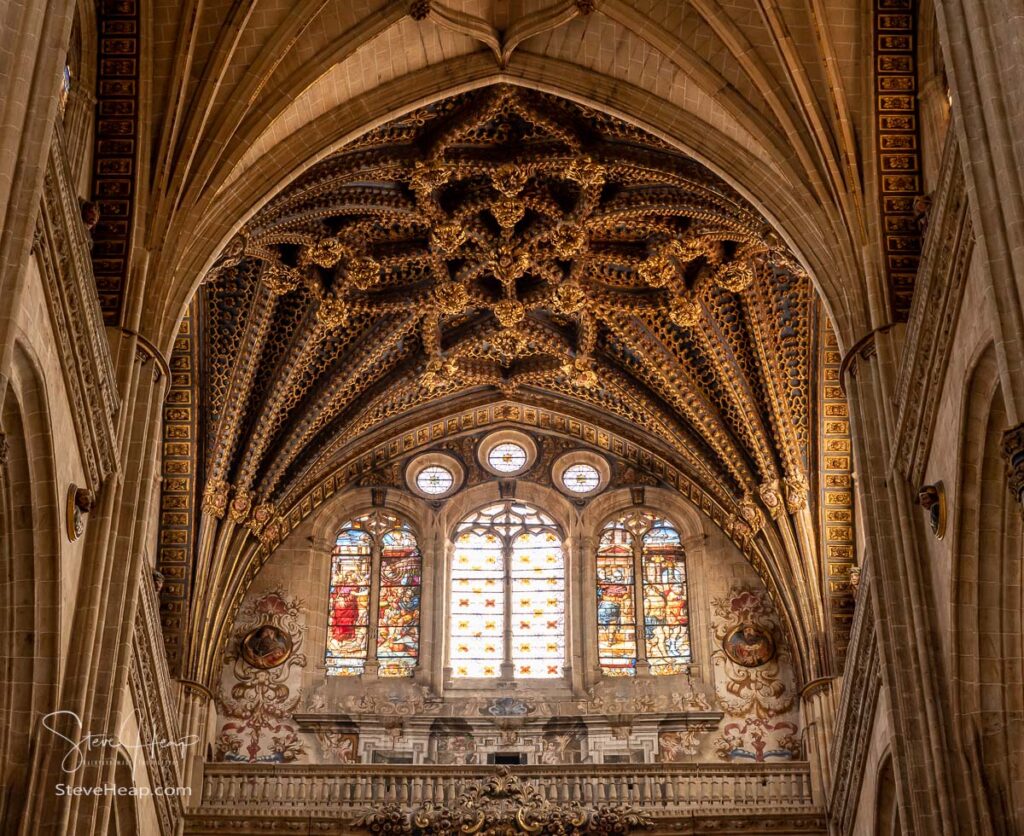
The paintings above the main altar were actually created in 20 years between 1430 and 1450 and represent the main events in the lives of the Virgin Mary and Jesus and were created by the Italian artist Dello Delli and his two brothers:
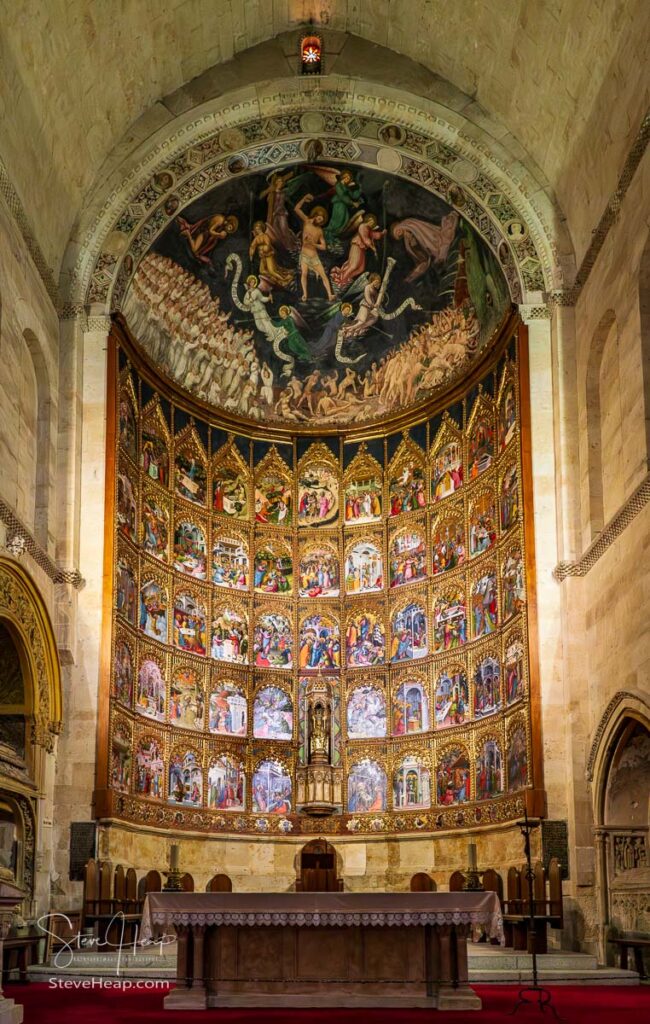
We wandered down to the old Roman bridge across the river and then back to the museum and gallery of Art Nouveaux and Art Deco with its fantastic stained-glass facade overlooking the river.
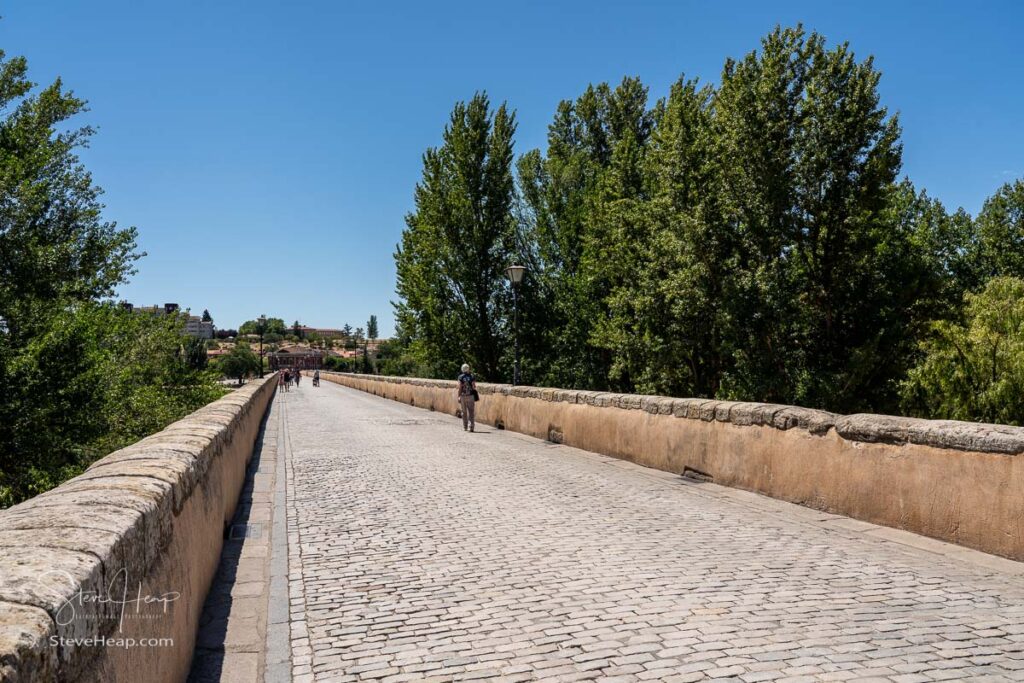
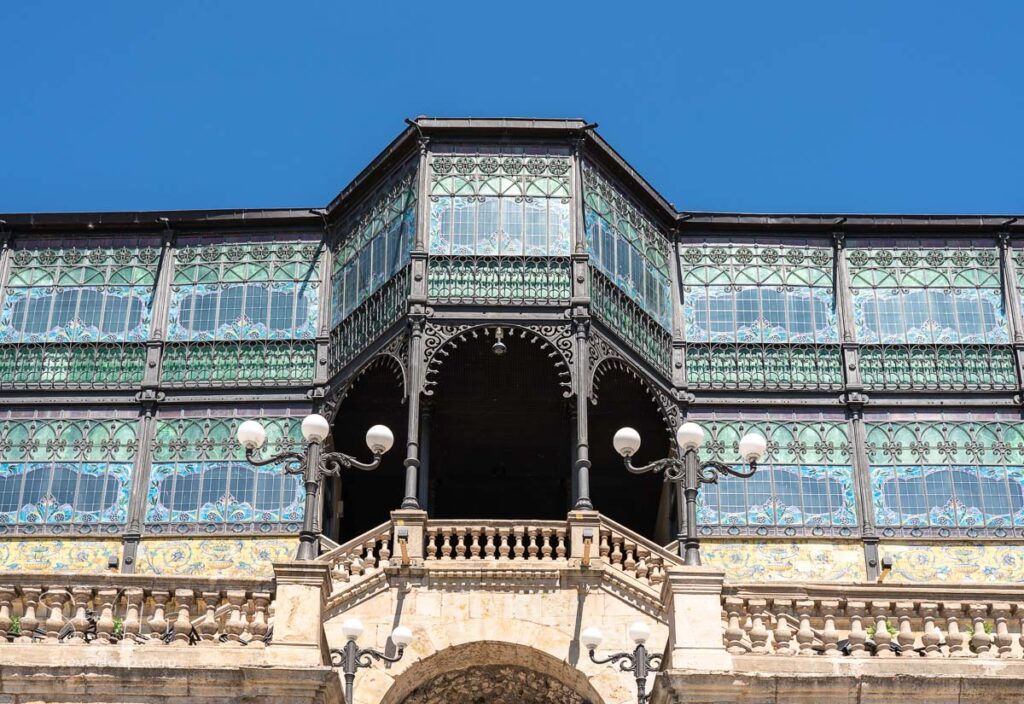
Coming back up the hill, we reached the Convento do San Estaban although we were just too late to go inside.
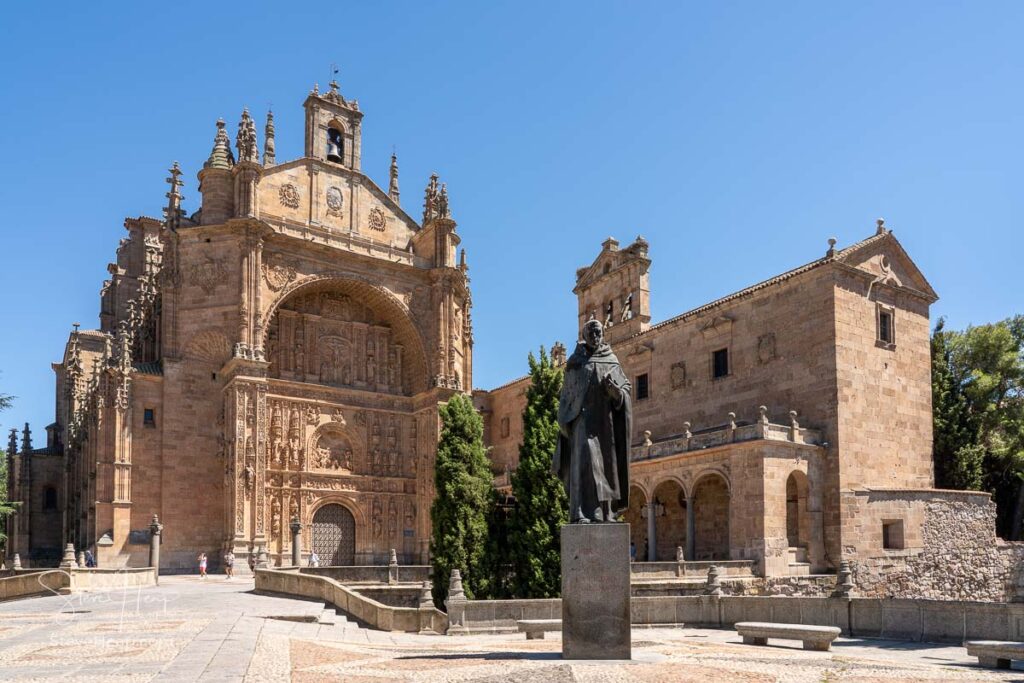
With that, we finally made our way back to the meeting point to find the coaches and make our way back to the boat and a very welcome dinner. It was certainly a fantastic day, but also a very wearing day with the walking we did to try to see all the sights! We were ready for a rest and the return journey down the Douro this time on our way back to Pinhao.
